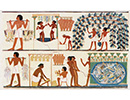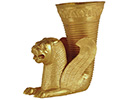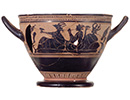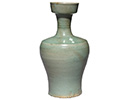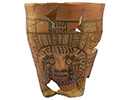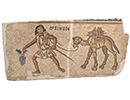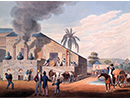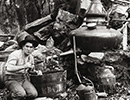A Taste for the Exotic
Korea
November/December 2020
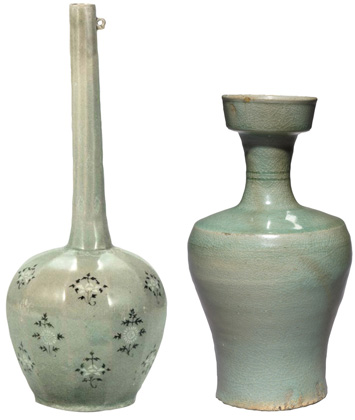 Although the ancient city of Xi’an in what is now central China is often considered the eastern terminus of the Silk Road, the flow of goods, people, and ideas between Europe, the Middle East, and Asia did not end there. Drinking vessels that date to Korea’s Goryeo Period (ca. A.D. 918–1392) suggest that imported spirits, including grape wines, a distilled anise-flavored drink called arak, and a fermented dairy product known as kumis, inspired artisans to craft novel types of ceramic containers to hold these newly enjoyed beverages. “New kinds of alcohol led to a proliferation in vessel shapes,” says art historian In-Sung Kim Han of SOAS University of London. She explains that many traditional East Asian alcoholic substances made from grains such as rice, millet, and barley, were thick and porridge-like. Pre-Goryeo vessels uncovered during archaeological excavations, mostly of tombs, suggest that these were primarily consumed from drinking bowls. More delicate cups from the same period were probably reserved for drinking tea and filtered rice wine, which was relatively rare.
Although the ancient city of Xi’an in what is now central China is often considered the eastern terminus of the Silk Road, the flow of goods, people, and ideas between Europe, the Middle East, and Asia did not end there. Drinking vessels that date to Korea’s Goryeo Period (ca. A.D. 918–1392) suggest that imported spirits, including grape wines, a distilled anise-flavored drink called arak, and a fermented dairy product known as kumis, inspired artisans to craft novel types of ceramic containers to hold these newly enjoyed beverages. “New kinds of alcohol led to a proliferation in vessel shapes,” says art historian In-Sung Kim Han of SOAS University of London. She explains that many traditional East Asian alcoholic substances made from grains such as rice, millet, and barley, were thick and porridge-like. Pre-Goryeo vessels uncovered during archaeological excavations, mostly of tombs, suggest that these were primarily consumed from drinking bowls. More delicate cups from the same period were probably reserved for drinking tea and filtered rice wine, which was relatively rare.
Han suggests that while medieval Korea is often thought of as having been closed off to the rest of the world, the Goryeo Kingdom’s contact with nomadic groups to the west kept it in touch with global trends and foreign commodities, including alcoholic beverages. Particularly after the kingdom became part of the Mongol Empire in 1270, elite members of Goryeo society adopted some of the consumption habits of their counterparts across Central Asia and the Islamic world, where alcohol was widely available despite its prohibition in the Koran. One particular type of long-necked bottle introduced during the Goryeo Period, which was used to store wine, appears to have come to Korea from Islamic Persia. “It seems that the tastes of the upper class in any era tend toward the cosmopolitan,” Han says. The Goryeosa, a history of the kingdom compiled in the fifteenth century, describes one Goryeo ruler who began wearing Mongolian clothing, sporting a pigtail hairstyle, and taking part in large-scale hunts, just like other princes across Eurasia. “Despite his courtiers’ criticisms,” Han says, “he and his immediate followers pursued a worldly lifestyle, including enthusiasm for exotic drinks.”
